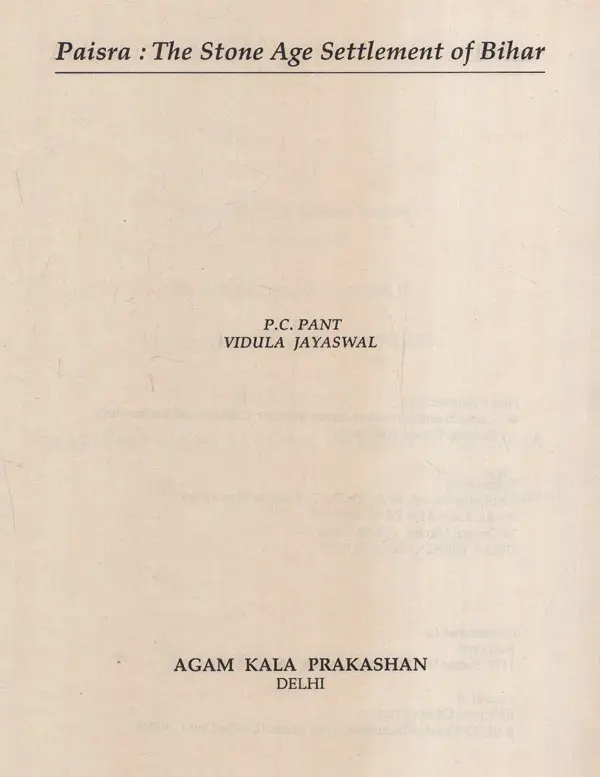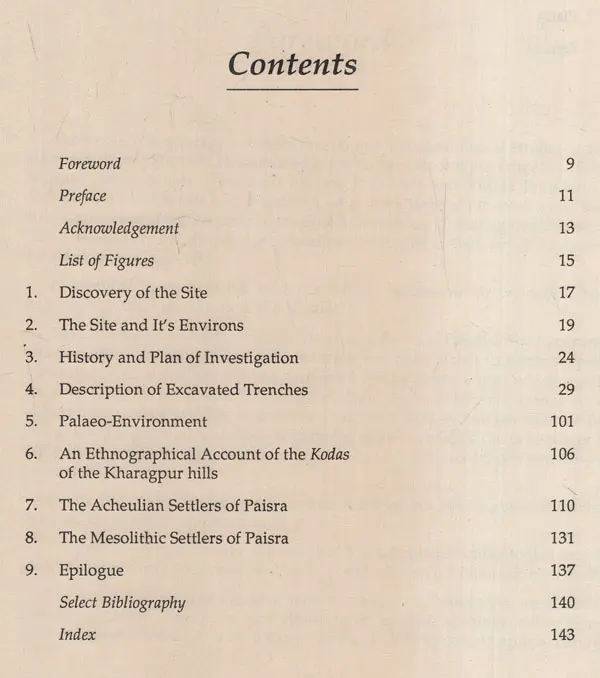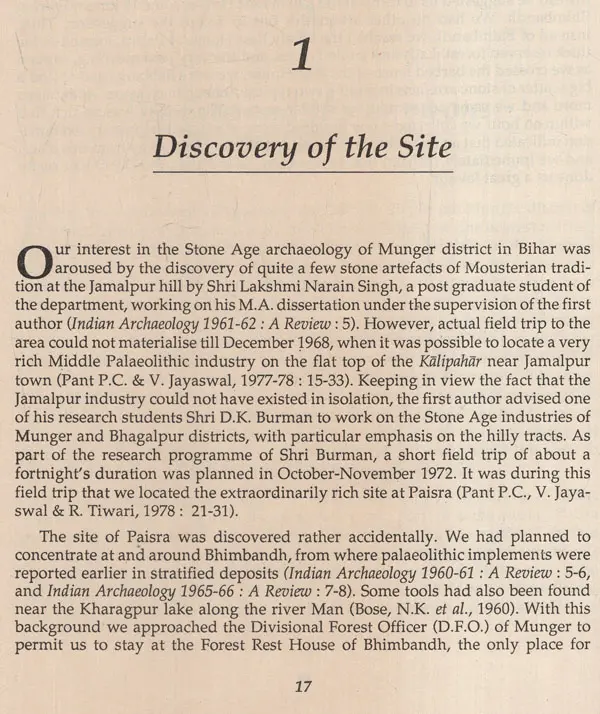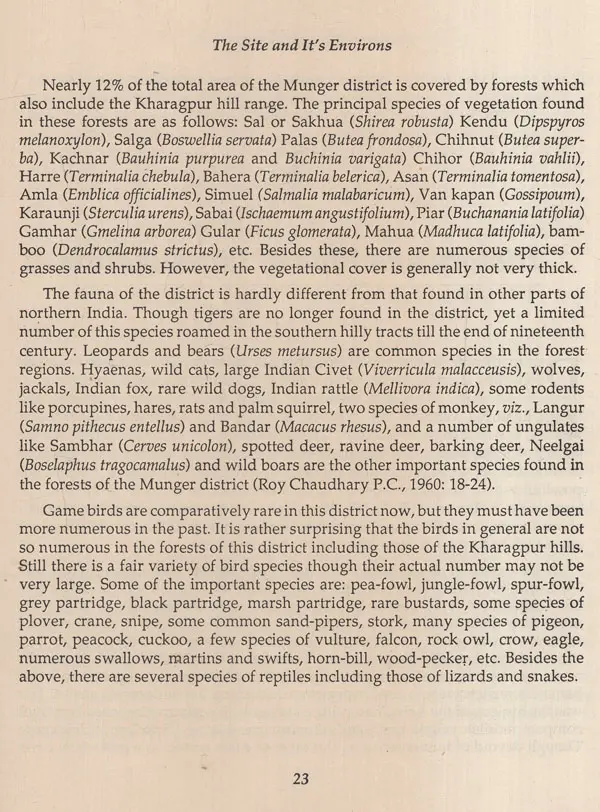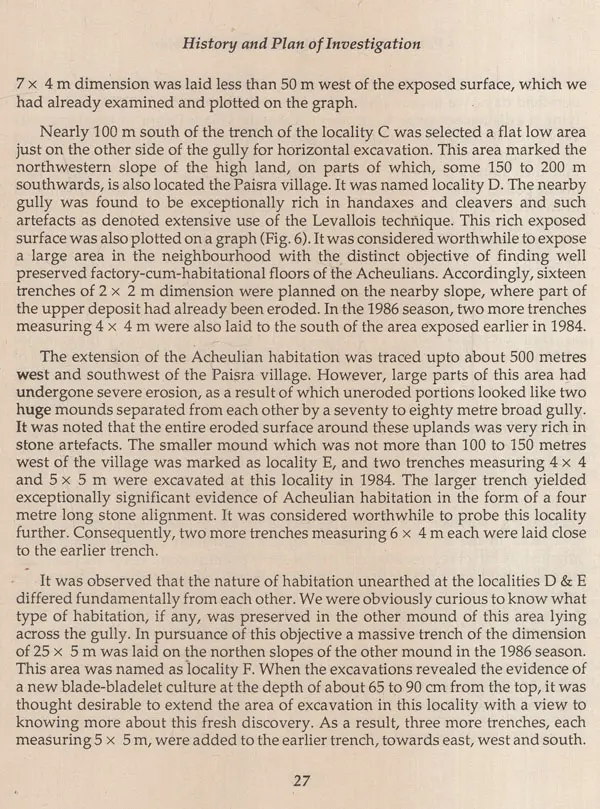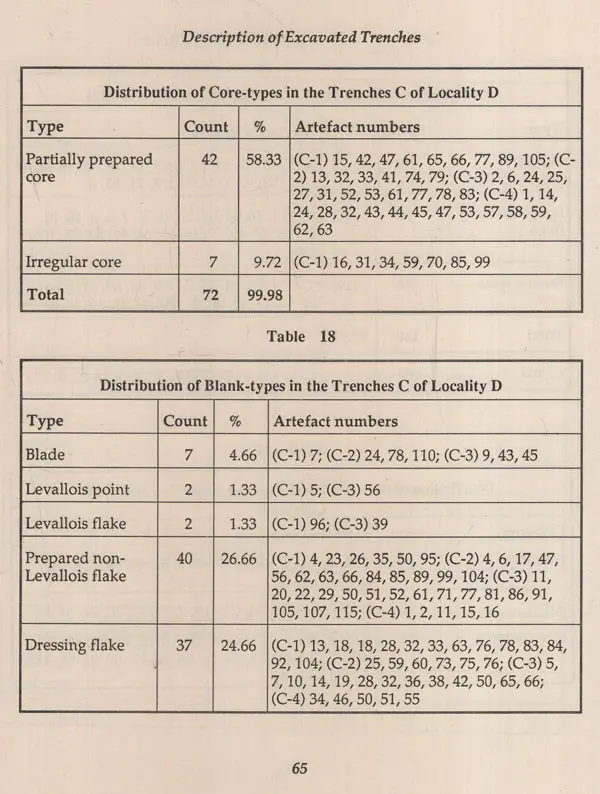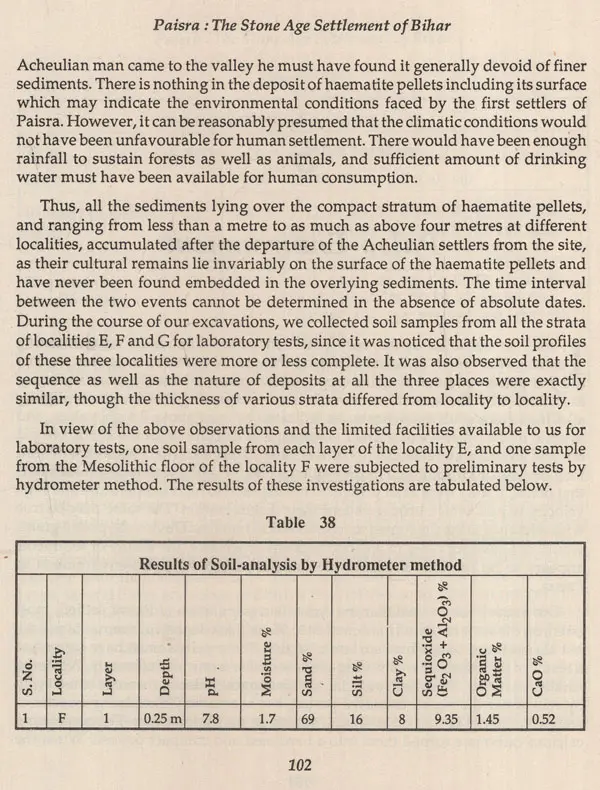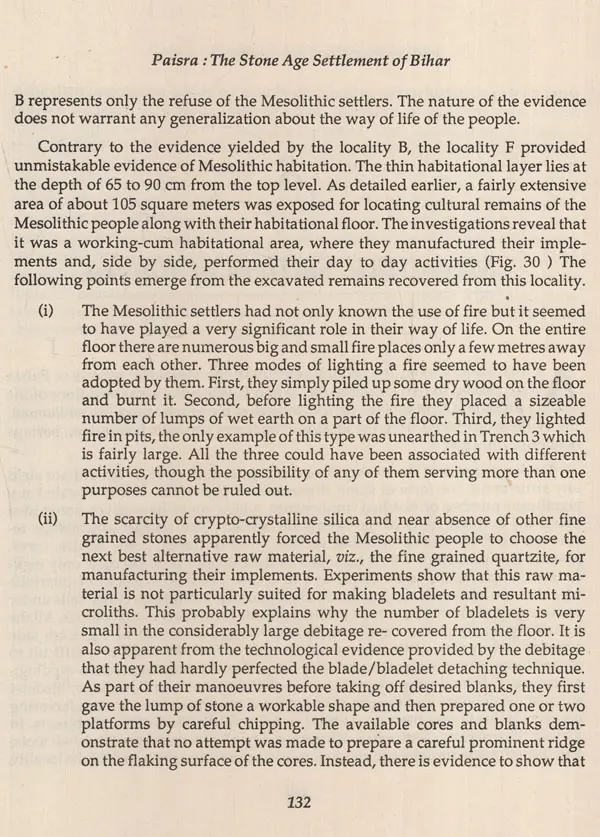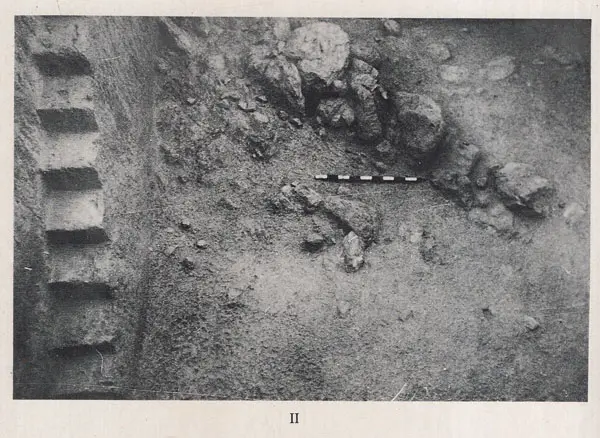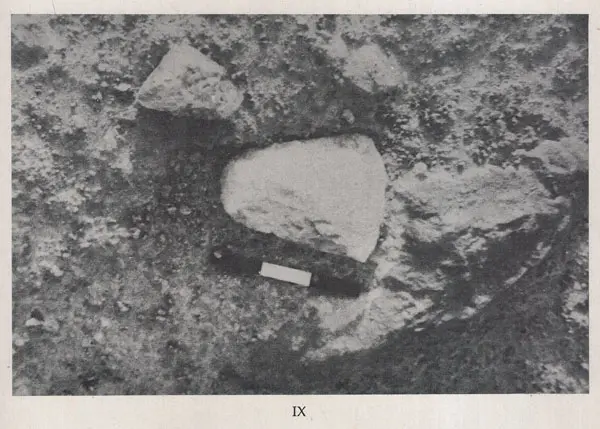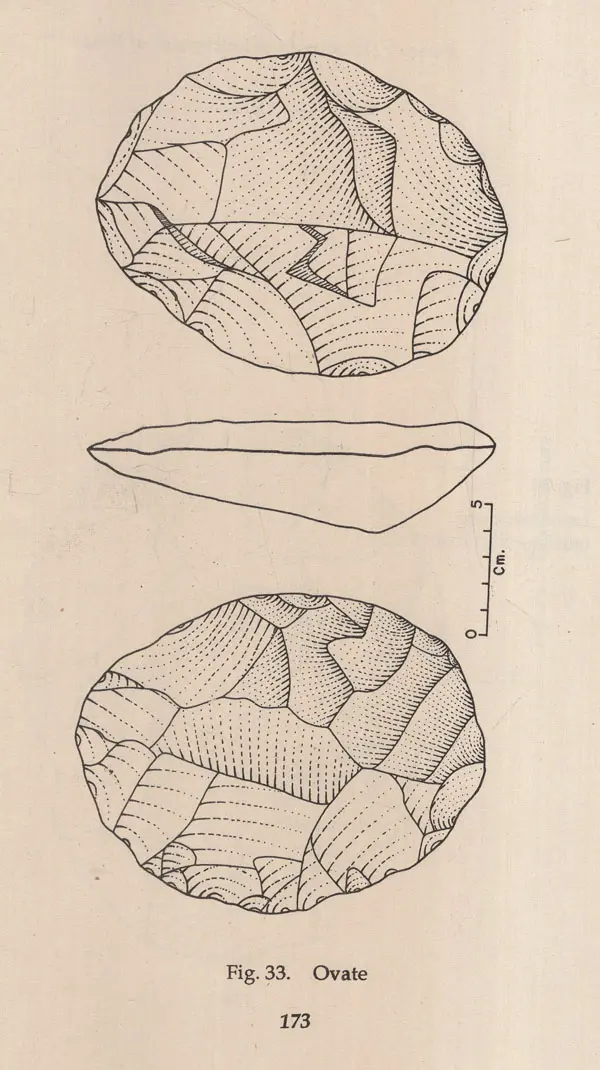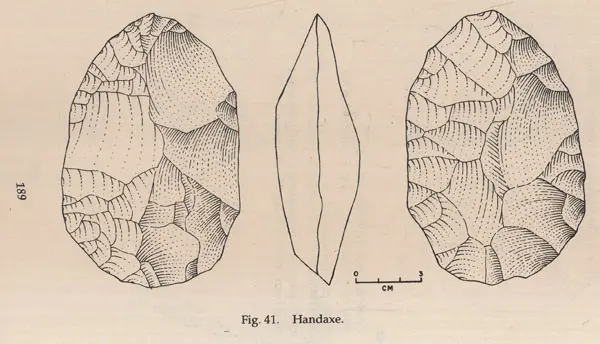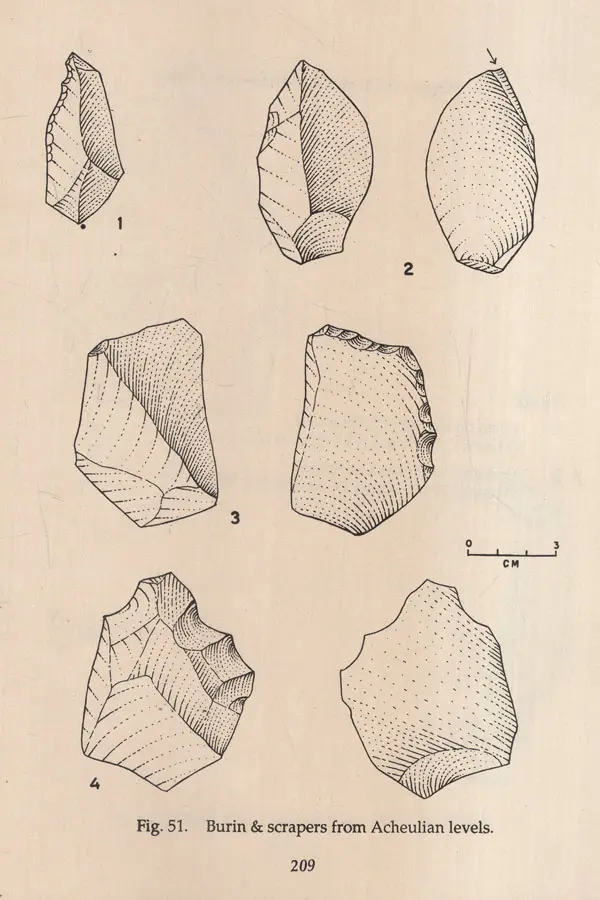
Paisra- The Stone Age Settlement of Bihar (An Old & Rare Book)
Book Specification
| Item Code: | UAP711 |
| Author: | P. C. Pant & Vidula Jayaswal |
| Publisher: | Agam Kala Prakashan, Delhi |
| Language: | English |
| Edition: | 1991 |
| Pages: | 225 |
| Cover: | HARDCOVER |
| Other Details | 11.00 X 9.00 inch |
| Weight | 860 gm |
Book Description
Paisra is a unique stone age settlement of the Indian sub-continent in more than one respect. First, the site has preserved unmistakable evidence for habita tional floors of the Acheulians, covering an area of several hundred square metres. Second, associated with the floors were found not only a large number of finished and semi-finished implements, flakes, cores and debitage, but also various hammers, anvils, lumps of raw material and other rock pieces. Third, the excavations have also revealed such remains as several post-holes and stone alignments of Acheulian settlers, which can be logically interpreted as indicat ing the existence of more than one type of structures. Lastly, Paisra had also been a camp-site of Mesolithic settlers in sixth millennium B.C. Incidentally, it re mains the only Mesolithic settlement of the entire eastern India, which has a radio-carbon date.
The excavation were carried out at as many as seven different localities. While the evidence for the Acheulians was noted every where, the remains of the Mesolithic culture were limited to only two localities. All the floors were carefully exposed, and all the evidence of artifact and non-artifact categories were meticulously numbered and recorded on as many as 25 graphs and 37 tables. Since the entire Kharagpur range, in the midst of which Paisra is located, is inhabited by aboriginals who still preserve some traits of hunting-gathering economy and nomadic way of life, attempts were made to carry out a first hand study of their habitational patterns and means of subsistence. Though these and other eth nographic data were extensively used for reconstructing various culture-patterns of the Acheulian and Mesolithic population of Paisra, yet archacological evidence remained the basis of all interpretations. The monograph also contains a brief discussion on paleo-enviornment.
Dr. Vidula Jayaswal, Reader in Archaeology. Banaras Hindu University is a well-known scholar of Prehistory and Archaeology. As a national scholar ship-holder of the Government of India, she received specialised training in Archaeology and Anthropol ogy at the University of California, Berkeley, USA. Before joining the faculty of B.H.U., she also served. as Deputy Superintending Archaeologist, Ar chaeological Survey of India, between 1977 and 1979.
Dr. Jayaswal carried out noteworthy archaeological field investigations in various parts of southern Utter Pradesh and Bihar, besides successfully completing a painstaking study of pottery and terracotta produc ing centres of the Middle Ganga plains. Author of six books, four in English, viz., Palaeohistory of India, Chopper-Chopping Component of Palacol lithic India, An Ethno-Archaeological View of In dian Terracottas, and Kushana Clay Art of Ganga Plains and two text-books in Hindi, viz., Bharatiya Itihasa Ke Adi Charana Ki Ruprekha (Pura-Prastara Yuga) and Bharatiya Itihara Ka Madhya Prastara Yuga, Dr. Jayaswal has contributed more than forty research papers, which have been published in the proceedings of International and National Symposia and various journals of repute.
Paisra is a unique Stone Age site of the Indian sub-continent in the sense that it has preserved evidence for extensive Acheulian habitation, the like of which has not been found anywhere so far. Two types of structural remains occur on the habitational floors which have also yielded a good number of Acheulian artefacts. First, there are post-holes which were obviously meant for thatched shelters of a temporary nature. And second, there is evidence for a number of stone alignments, either straight or somewhat curved, which were presumably placed to hold down covers made of sticks, leaves and grasses. (In the absence of animal remains, it is rather difficult to presume the existence of skin-covers). Unfortunately, the site has not preserved any organic remains, which could throw direct light on the subsis tence patterns of the Acheulians in this part of the world. Nor it is possible to provide any absolute date to the culture. But on techno-typological grounds Paisra appears to represent an advanced Acheulian stage of the Indian sub-continent.
**Contents and Sample Pages**
